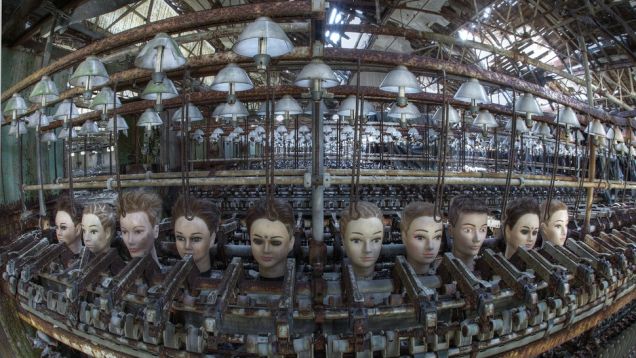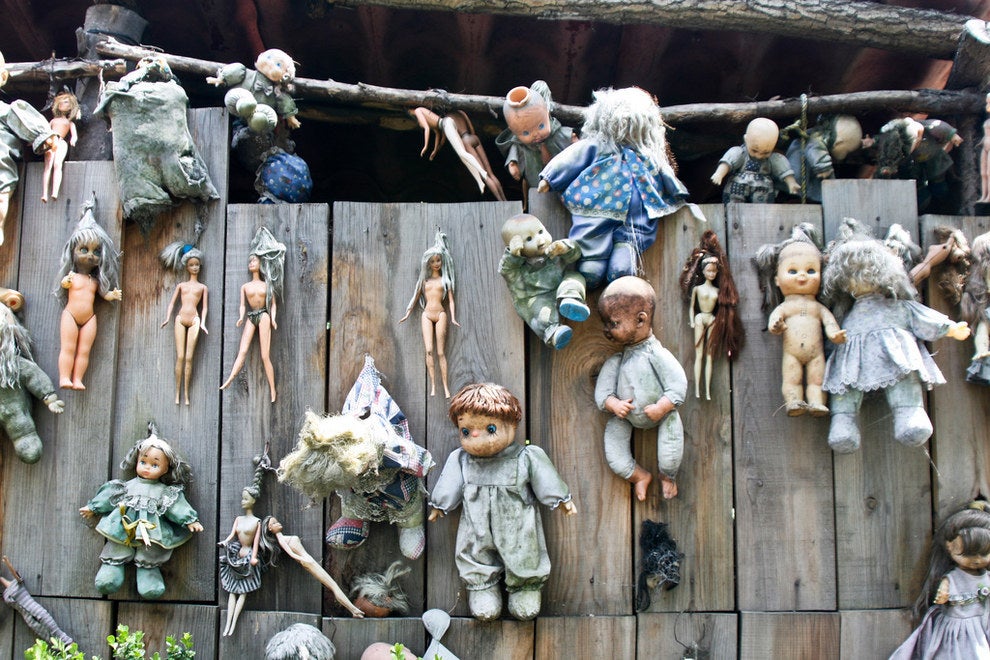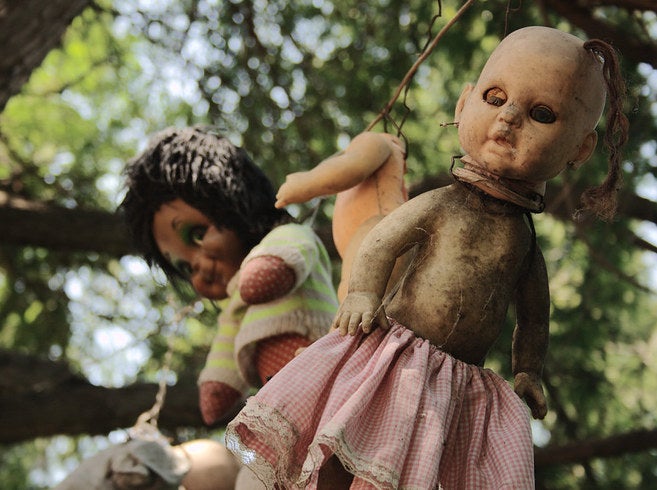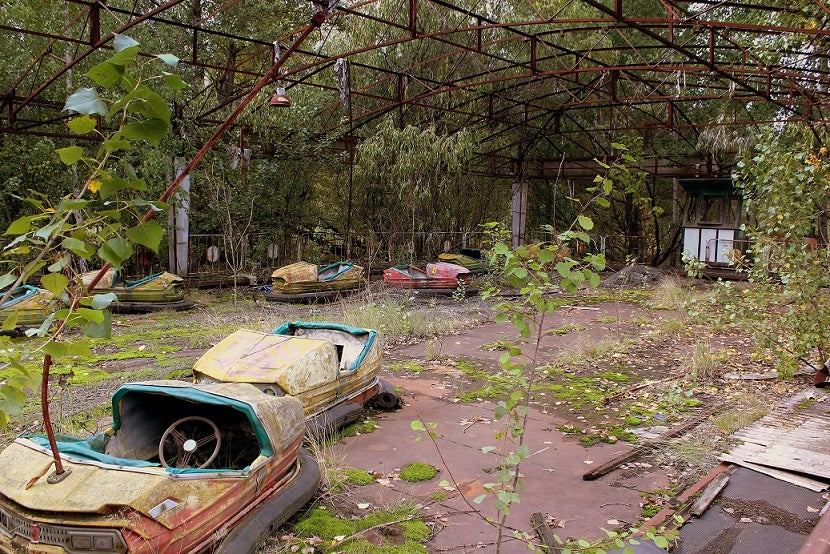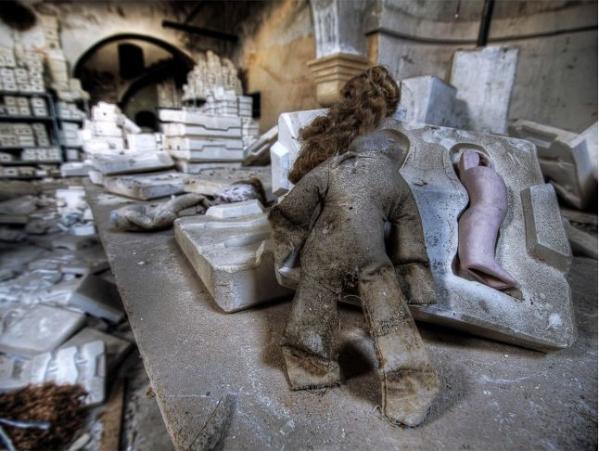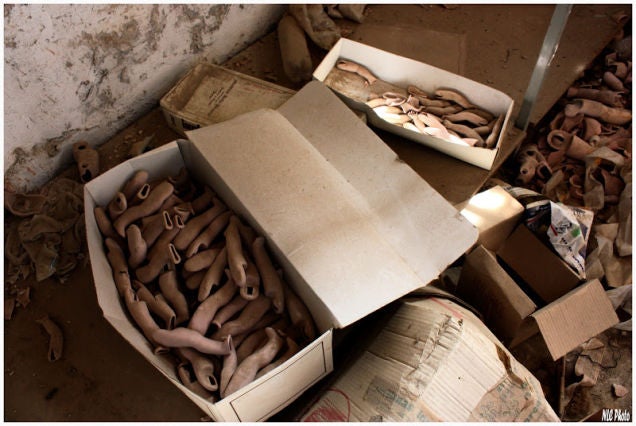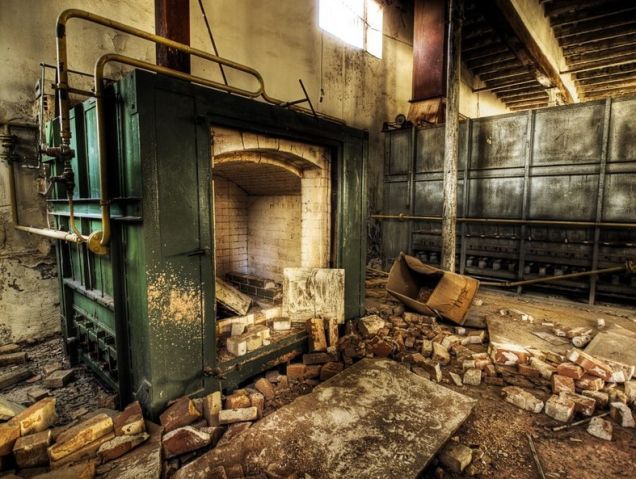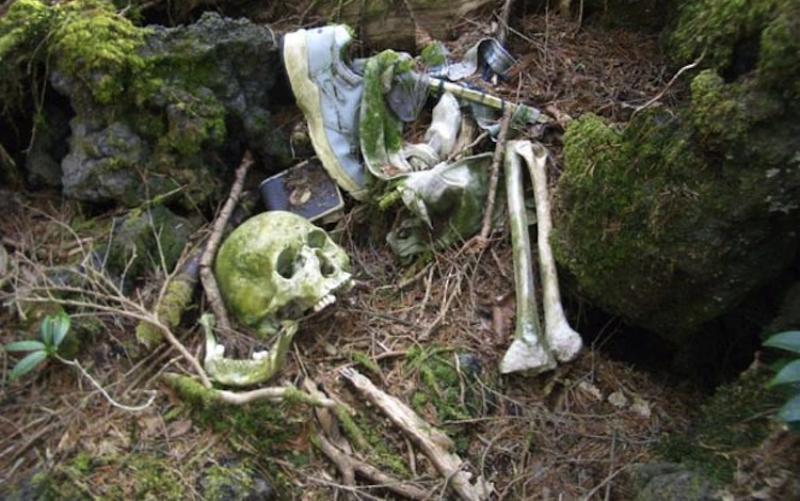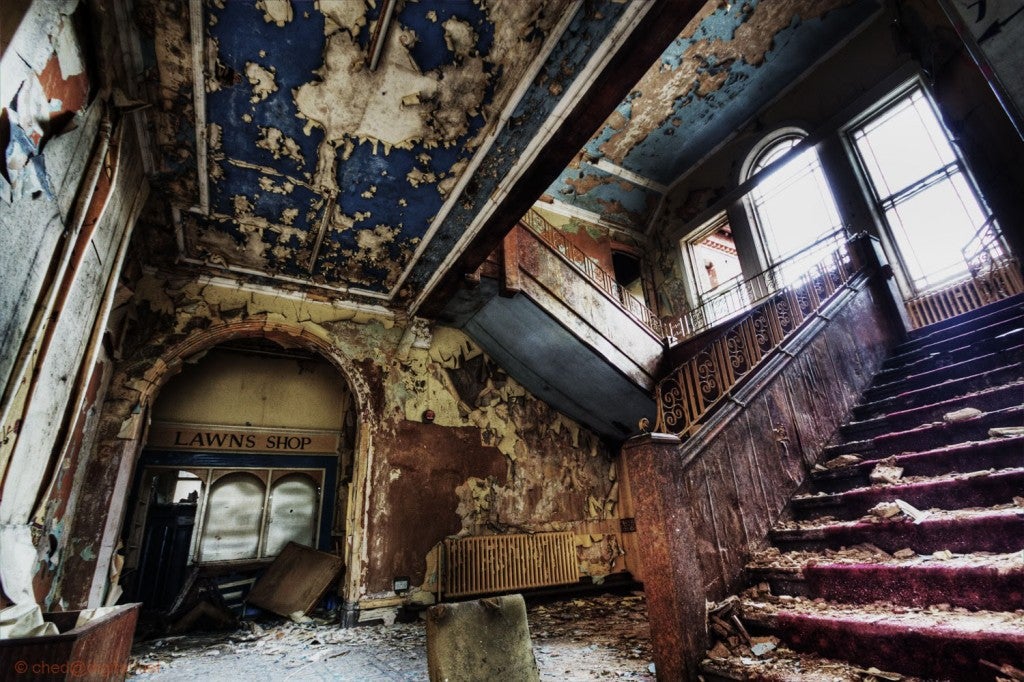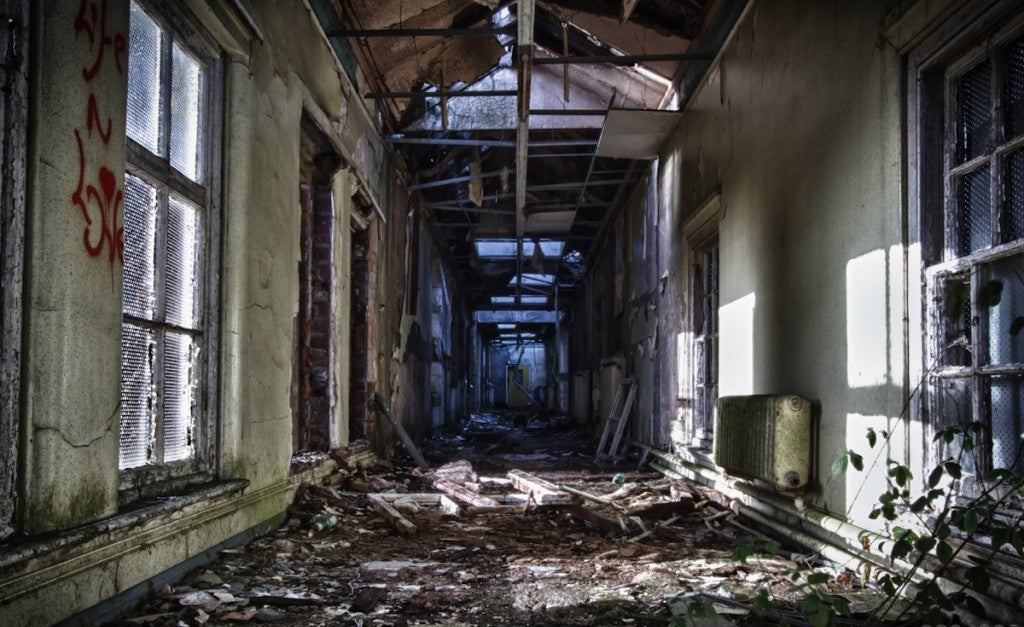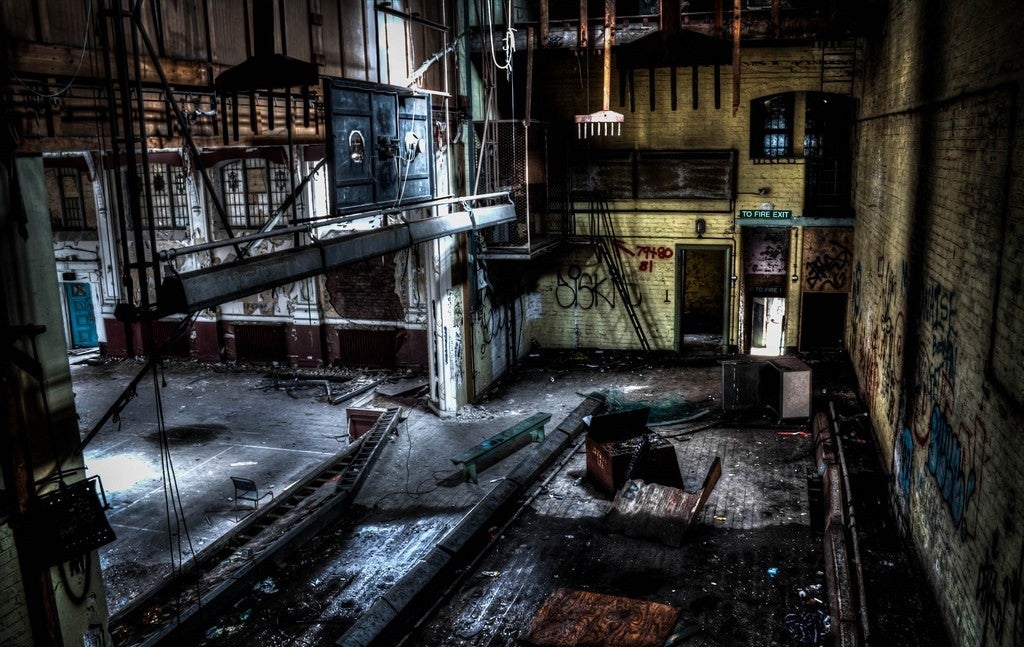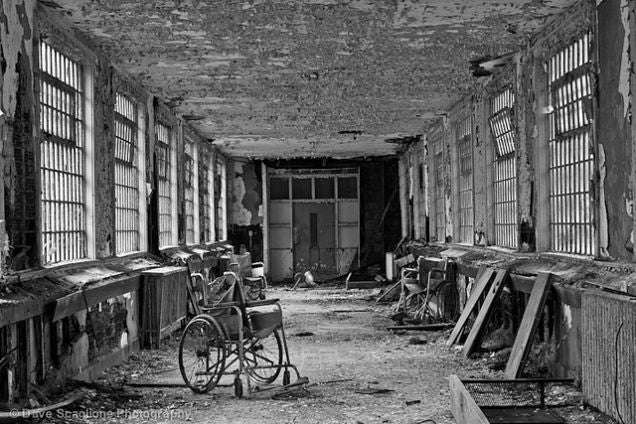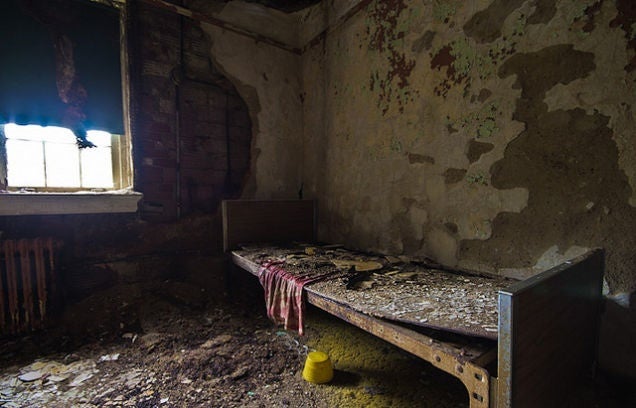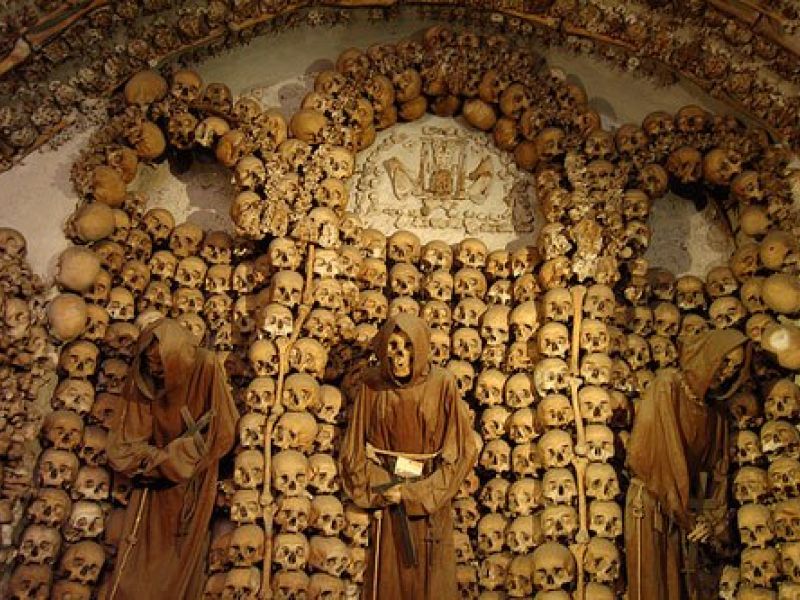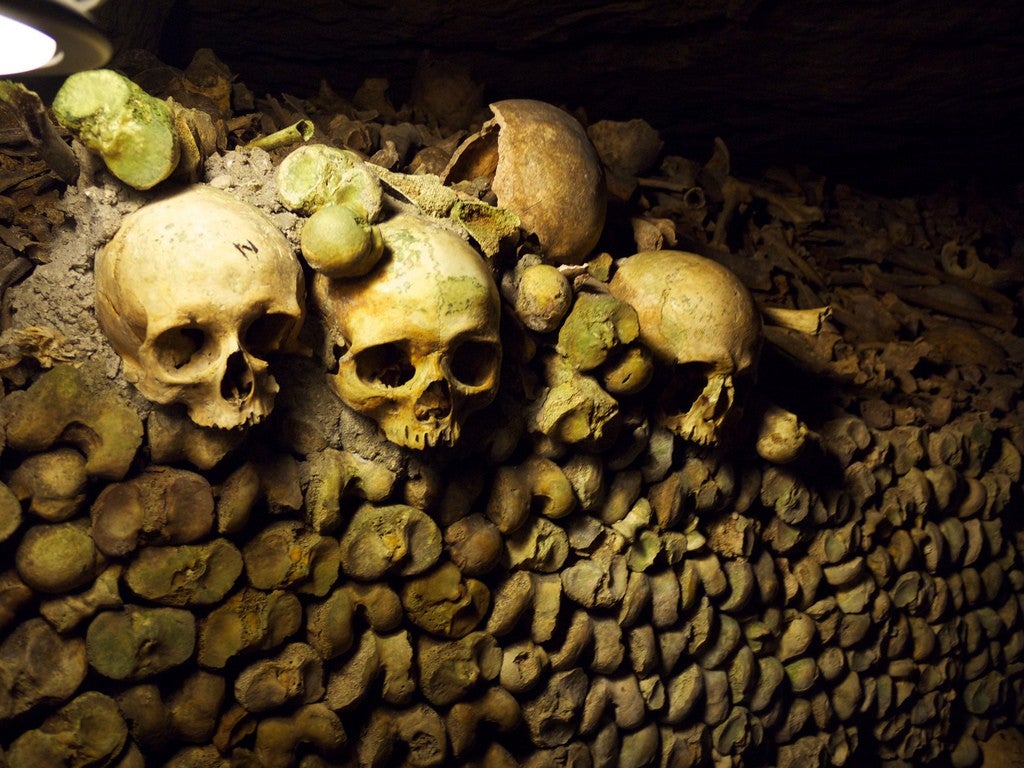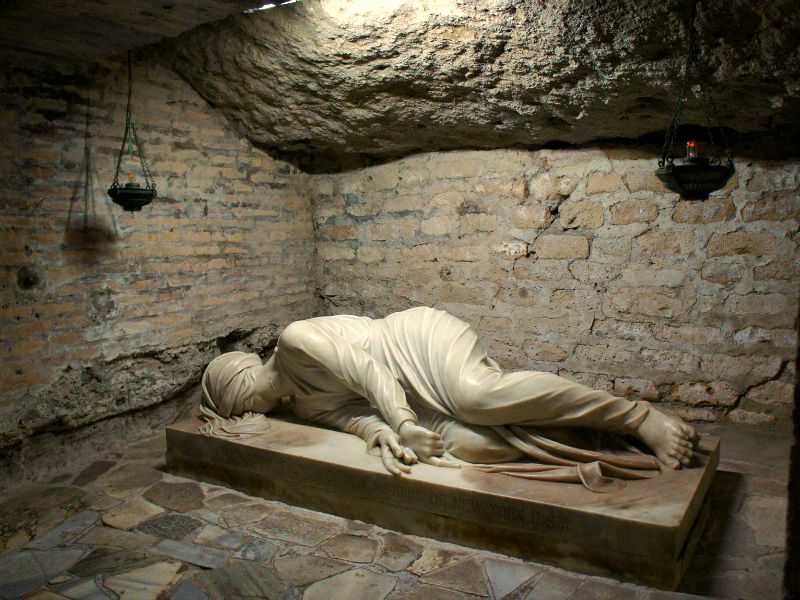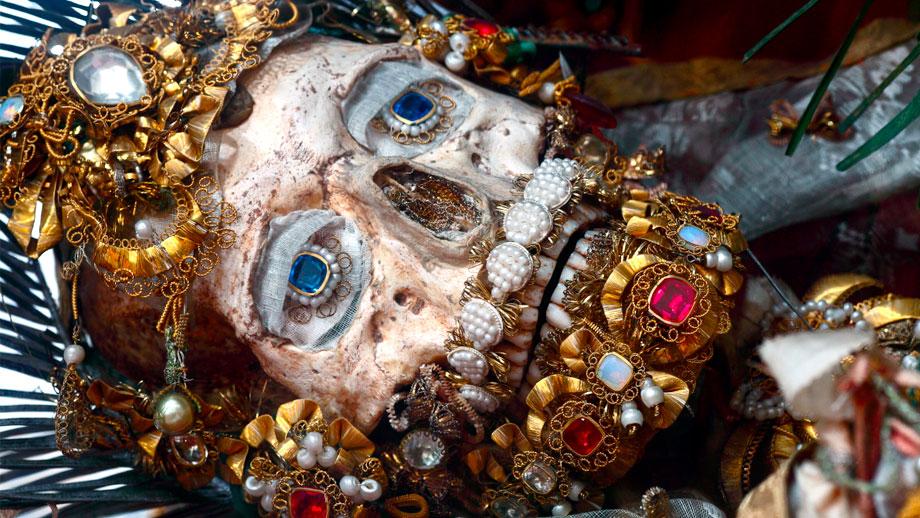1. Isla de las Muñecas – Mexico City, Mexico
The Island of the Dolls is located near a swamp on the outskirts of Mexico City. As its name implies, the land is home to countless broken and worn out dolls that hang from trees and on walls giving the place an eerie presence. The story goes that the island’s former caretaker discovered a dead girl in the canal bordering the island, so he began collecting dolls from the trash and hanging them up all around the island as a method of appeasing the girl’s spirit. And if that isn’t all freaky enough, the caretaker himself was discovered dead in 2001 in the exact spot he claimed to have spotted the dead girl decades before.
2. Pripyat, Ukraine
Pripyat is known for its history of the Chernobyl Nuclear Power Plant disaster that dated back in 1986. Once housing thousands of plant workers, as well as their families, the entire city was evacuated in two days after an accident caused a leak of nuclear radiation. Now, the town stands empty, with few remnants of the lives that once existed there. One notable landmark often featured in photographs of the city and visible from aerial-imaging websites is the long-abandoned Ferris wheel located in the Pripyat amusement park.
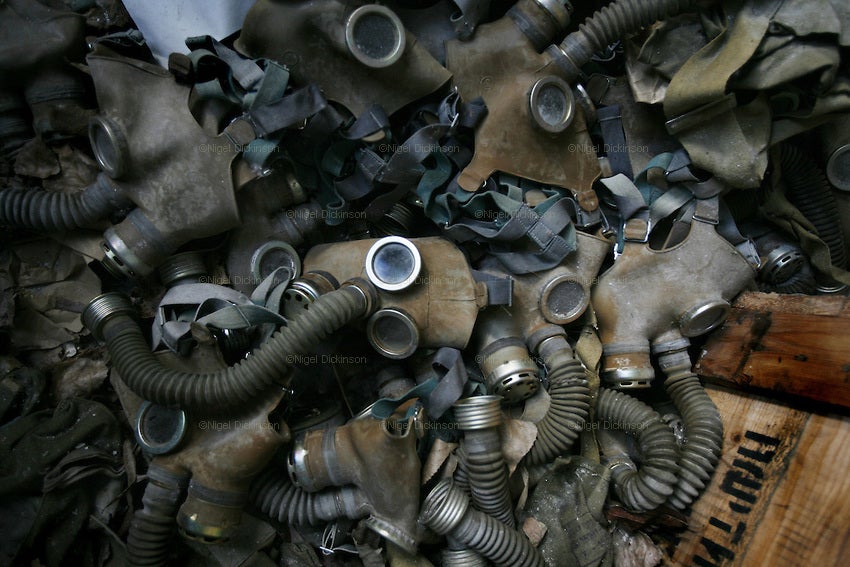
3. Doll Factory, Spain
Not much is known about this place except that it used to be a factory that made porcelain dolls. The factory was found by a photographer who took several images of the abandoned place. He didn’t even disclose the location for fearing looters and vandals who would destroy what remains of the place.
Another man that ventured to the factory warned people saying, “Do not enter the factory, seriously, I took a doll’s head and a box … and I had to return it,” he says. “Now that site gives me a strong anxiety has something, there have been rituals.”
Kinda gives you the chills doesn’t it?
4. Suicide Forest, Japan
Aokigahara (青木ヶ原), also known as the Suicide Forest or Sea of Trees got its name from, well, people who go to the forest to commit suicide. The 35 square kilometres forest has an historic association with demons in Japanese mythology The place is such a popular place for suicides that it has a notice asking people to reconsider by thinking about their families and contact a suicide prevention association. In the year 2010 alone, among the 200 attempts, a total of 57 suicides was recorded.
[sociallocker]
5. Whittingham Asylum
Anything with the word “asylum” couldn’t be good, especially an abandoned one. However, the remains of the psychiatric hospital appears beautifully-grotesque, almost like a map from Bioshock.
The hospital opened in 1873 fully equipped with its own church, farms, railway, telephone exchange, post office, reservoirs, gas works, brewery, orchestra, brass band, ballroom and butchers before closing in 1995. In 1967, complaints of cruelty, ill-treatment and fraud in the hospital by student nurses were repressed until the Hospital Management Committee intervened.
Some of the complaints were:
- That patients had been left untreated
- That some patients had been given only bread and jam to eat or had been given food mixed up and served as “slops”
- That some patients had been locked outside, regardless of weather conditions, or in washrooms and cupboards.
- That in one ward, students had witnessed patients being dragged about by their hair.
- That on ward 3, a male ward, patients were given “wet towel treatment”, which involved twisting a cold, wet towel or bed sheet round a patient’s neck until the patient lost consciousness. Patients were also seen to have been punched and locked in a storeroom.
- On ward S2, another male ward, it was alleged that two male nurses had poured methylated spirits into the slippers of one patient and into the dressing gown pocket of another and set them alight.
[/sociallocker]
6. Trenton State Hospital
The New Jersey State Lunatic Asylum (later Trenton State and now Trenton Psychiatric Hospital) was better remembered for its medical abuses than for its well intentioned beginnings. Dr. Henry Cotton became the director of the hospital in 1907 and eventually instituted treatments based on his own theories of mental illness.
He had a very progressive attitude toward care for his patients. He did away with the mechanical restraints that so many other hospitals used to control patients, introduced occupational therapy, increased the staff and ensured that the nurses would prevent violence against the patients, and instituted daily staff meetings about patient care.
But Cotton developed a dangerous theory about mental illness, one that turned his hospital into a house of horrors. After it was confirmed in 1913 that the spirochaete that causes syphilis can cause the disease’s psychiatric symptoms, Cotton began to suspect that all mental illness was caused by bodily infections, and that the only way to cure the patient was to remove the offending infection. In 1917, he began removing his patients’ teeth, even in cases where X-Rays showed no evidence of infection. He soon moved on to other body parts: gall bladder, stomachs, ovaries, testicles, tracts of colon, uteruses. Cotton claimed a cure rate of 85%, but in reality, his surgeries had an unconscionably high mortality rate. And he didn’t always obtain consent from patients or family members—and, in fact, sometimes performed these removals despite their protests.
Trenton Psychiatric Hospital is still operational, but parts of the campus have been abandoned and have fallen into disrepair.
7. Catacombs of Rome
Catacombs in general are human-made subterranean passageways for religious practice. Any chamber used as a burial place is a catacomb, although the word is most commonly associated with the Roman Empire. Many are under cities and have been popularized by stories of their use as war refuges, smugglers’ hideouts, or meeting places for cults.
The Catacombs of Rome are ancient catacombs, underground burial places under Rome, Italy, of which there are at least forty, some discovered only in recent decades. Though most famous for Christian burials, either in separate catacombs or mixed together, people of all the Roman religions are buried in them, beginning in the 2nd century AD, mainly as a response to overcrowding and shortage of land.

